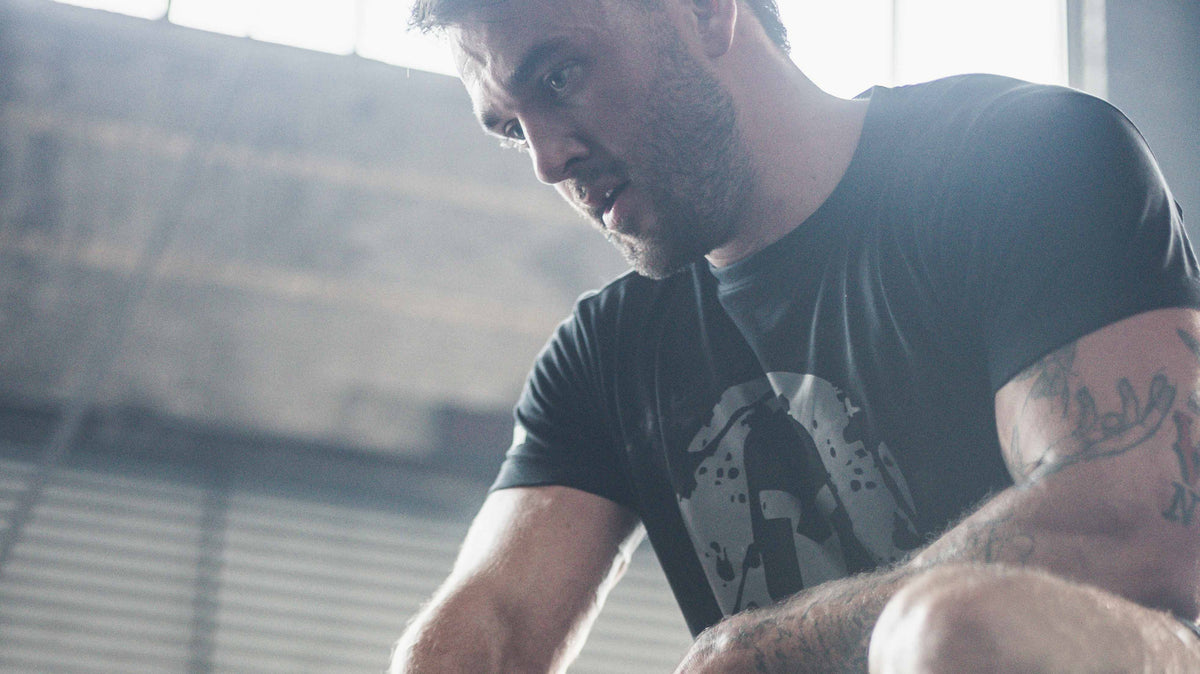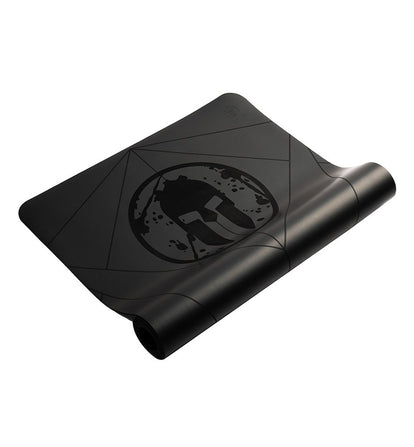The 10 Best Exercises for a Dynamic Warm-Up

Like all elite-level athletes and coaches, NYC-based fitness trainer Gabe Snow is adamant about the importance of comprehensive dynamic warm-ups and active recovery days — especially when it comes to training for a Spartan Race.
“When it comes to a warm-up, the basics — like jumping jacks and high knees — are fine, but if you want to truly optimize your performance and reduce the risk of injury, they need to be very dynamic and thorough,” he says.
Related: Recompose Your Body in 30 Days With Gabe Snow
According to Snow, there are two key components for a dynamic warm-up:
Muscle Activation
When you’re using a muscle to perform an exercise, there are three phases of the movement: concentric, isometric, and eccentric.
Dropping into a squat, for example, is eccentric, whereas pausing at the bottom is isometric, and coming up out of the squat is concentric.
Related: How to Master the Five Primary Body Recomposition Program Movements
“A quality, dynamic warm-up prepares the body to handle all three phases of the movement,” Snow says. “Static stretches like a standing quad stretch, for example, have a place, but not in the warm-up."
Dynamic movements increase circulation, helping to warm joints and muscles. Static stretching is more suited for post-workout, as it’s been shown to slow muscles.
Joint Mobility
Most — if not all — injuries happen when the body isn’t fully prepared for movement, or it lacks the mobility needed to perform it safely, Snow says.
“I want people to be able to reach the full range of motion in their ball and socket joints before really pressing it in a workout,” he explains.
Related: This Man Completely Recomposed His Body In Just Months. Here's How.
The following are a series of Coach Gabe’s absolute go-to favorite exercises for both warming up and active recovery days.
- Perform 1 round of the following exercises for 30 seconds each on lower body workout days.
- Perform 1 round of the following exercises for 30 seconds each on upper body workout days.
- Perform 2 to 3 rounds of all of the exercises on active recovery or rest days.
10 Dynamic Warm-Up Exercises
- Side-Lying T-Spine Rotation
You may be surprised to learn that the muscles primarily responsible for spinal rotation aren’t in your back, they’re the internal and external oblique abdominals, which don’t attach to the spine at all.
The side-lying thoracic-spine rotation works these muscles through their full range of rotation while stretching the sides of the lower back. This exercise also stretches the glutes and hips, which can be helpful if you suffer from sciatic nerve pain.
How to do a side-lying T-spine Rotation on the right side
- Lie on your back.
- Bend your right knee and bring it over your left side so that it’s almost touching the floor to your left. Grab behind the right knee with your left hand to hold it down.
- Stretch your right arm out to your right side, laying it flat on the floor (with your palm facing upward), and look toward it.
- Keeping your right arm straight, bring it over to your left side to touch the floor palm-down. Turn your head to follow your right hand throughout the motion.
- Repeat for 10–20 reps.
- X Plank
A combination exercise for strength and mobility, the x plank builds endurance in your arms and back while also warming up your shoulders and providing a mild stretch to your hamstrings and lower back.
It also builds balance by requiring you to hold yourself stable on one hand and both feet during a dynamic movement.
How to do the X Plank
- Get into a push-up position (arms extended, as in the top of a push-up).
- Push the hips up and back and the head down and back so that your torso is now bent at the waist.
- At the same time, pick up your left hand and swing it down and across your body, touching your right foot.
- Reverse steps 2 and 3, coming back to the push-up position.
- Repeat steps 2–4 on the other side, bringing your right hand to your left foot.
- Repeat steps 2–5 for 10–20 times.
- Swimmers
Swimmers are a pure shoulder mobility exercise, which help you move your arms behind your torso. This is ideal for anyone who has trouble scratching their own back.
How to do Swimmers
- Lay on the floor facedown with your toes and forehead against the floor and your chin tucked.
- Place your hands behind your head, fingers interlaced.
- Unlace your fingers and extend your hands forward, then swing them out wide and bring them back together behind your back. Clasp them together, palms upward/outward.
- Relax your arms and allow your elbows to drop down toward the floor.
- After 2–3 seconds, bring your elbows back up, unclasp your hands, and reverse step 3, ending back at step 2 with fingers interlaced behind your head.
- Repeat steps 2–3 for 20–30 reps.
MORE: Dynamic Warm-Up Exercises: Perfect Prep to Crush Every Workout
A combination of endurance, coordination, balance, and a mobility warm-up, the lateral bear crawl uses the arms, back, core, and legs. (But you’ll likely find it most fatiguing on your quads due to the way it requires you to keep your legs bent the entire time.)
The need to cross-coordinate between opposite arms and legs builds coordination in a way that has carryover to many sports.
How to do the Lateral Bear Crawl
- Get into a push-up position, but bend your knees at a 60-degree angle, as in the halfway point (more or less) of a squat.
- Step your left leg and right arm to your left, however far it takes to bring your right hand next to your left hand.
- Step your right leg and left arm to the left, bringing your right foot next to your left foot.
- *Optional* Repeat steps 2 and 3 as many times as you have room for.
- Reverse steps 2 and 3, as many times as you did them.
- Repeat steps 2–5 for 10–30 reps.
- 90s Stretch
A simple but effective iso-lateral stretch, the 90s stretch simultaneously opens the hips and stretches your glutes. Mobilizing the hip joint is critical before any type of lower body activity or sport. This stretch can be made to be dynamic if used in a warm-up, or static for post-workout cool downs.
How to do the 90s Stretch
- Sit on the floor.
- Extend your left leg forward and, with your knee bent, bring the outside of the knee down so that it touches the floor.
- Extend your right leg to the side and slightly behind yourself with your knee bent, so that the inside of the right knee is on the floor.
- Place your hands on the floor to stabilize yourself. Place your right hand between your right knee and left foot and your left hand out to your left side.
- Slowly lean forward and back, feeling the stretch on the glute for 30 seconds.
- Side-Lying 90 With Hip Lift
This is a hip mobility and strength exercise combined with a pair of minor leg stretches, similar to the 90s stretch. The side-lying 90 with hip lift will activate your core and glutes, priming the body for performance.
How to do the Side-lying 90 with Hip Lift
- Get into a right side plank position. Bring your right leg slightly forward (relative to how your torso is facing) and your left leg slightly back so that both knees are on the floor and staggered slightly, rather than stacked on top of one another.
- Keeping your left hand on your left hip, lift your hips as far off of the floor as you can and hold for 2–3 seconds before dropping and relaxing.
- Repeat 20–30 times.
- Quadruped Straight-Leg Hip Abduction
This is a bodyweight hip abduction exercise, which works both the outer quads and gluteus medius. You’ll also activate all of the core and shoulder muscles for stability.
How to do the Quadruped Straight-Leg Hip Abduction
- Get on your hands and knees with your arms straight (as in the top of a knee push-up).
- Extend your right leg out to the side completely straight with your feet on the ground.
- Lift your right leg as high off of the ground as it will go and hold for 2–3 seconds.
- Repeat for 15–20 reps.
- Quadruped Hip Extension
The name here is slightly misleading — While this exercise stretches your quads, the strength is coming mainly from your gluteus maximus. You’ll also activate the muscles of your core and shoulders for stability.
How to do the Quadruped Hip Extension
- Get on your hands and knees with your arms straight.
- Swing your left leg back and up, bringing the left foot as high as you can while keeping the knee bent. Then, bring it back to the starting position.
- Repeat step 2 on the right side.
- Repeat steps 2–3 for 20–30 reps on each side.
- Half-Kneeling Hip Flexor Stretch
Just like the name says, this stretches your hip flexors, a group of muscles in your hips and upper thighs that you use whenever you walk, run, jump, or use your hips in any way. Secondarily, reaching your arms up over your head will improve shoulder mobility. Pro tip: keep your core braced and don’t arch your back.
How to do the Half-Kneeling Hip flexor Stretch
- Kneel on your right knee, with your left foot almost directly in front of your right knee. Tuck your arms to the sides of your torso.
- Push your hips forward. At the same time, bring your arms forward and up, stretching them over your head with your palms toward each other. Hold that for 2 seconds.
- Reverse step 2 and come back to the starting position.
- Repeat steps 2 and 3 for 15–20 reps.
- 90s Transition
Similar to the 90s stretch, the 90s transition is more dynamic. You’ll mobilize both hip joints while activating the muscles of your core, back, and shoulders for stabilization.
How to do the 90s Transition
- Sit on the floor with your feet in front of you, your heels on the floor, and your toes pointed up. Place your hands on the floor on either side and slightly behind yourself.
- Keeping both hands in place, rotate your torso to the right. At the same time, rotate your hips to the right so that the right sides of both knees come to the floor.
- Reverse step 2, rotating left and bringing the left sides of both knees to the floor.
- Repeat steps 2 and 3 for 20–30 reps.

